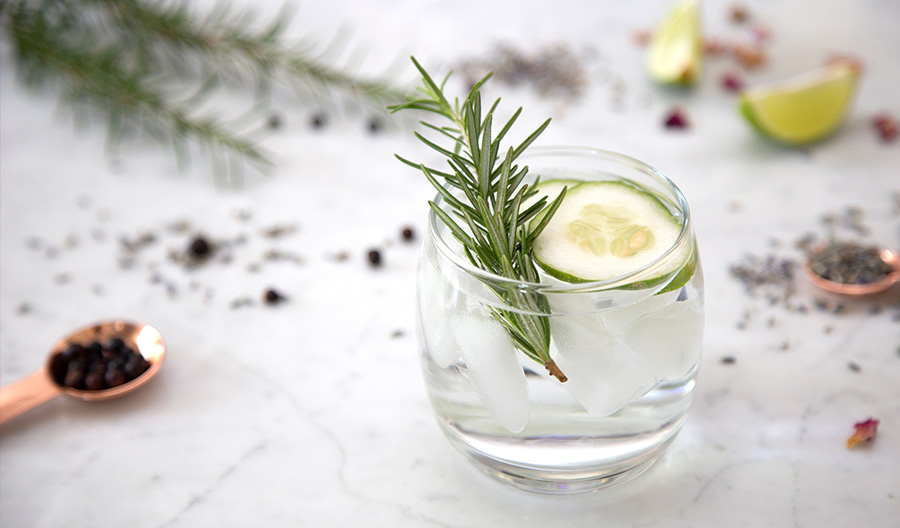The subtle flavorings that make gin so delicious can seem downright inscrutable. Many producers don’t even list ingredients on their labels, which only sustains the mysteries of gin, whose lore has been elevated by the likes of fictional characters such as Jay Gatsby and James Bond.
But we’re here to take the guesswork out of gin. This guide lists popular gins based on their dominant flavors, collectively known as botanicals. Pine-like juniper is required for gin, though distillers can tune that juniper note to be a whisper or a wallop. Beyond that, botanicals can vary widely. The most common include spices (coriander, cardamom, anise), flowers (rose, lavender), and citrus peel (lemon, grapefruit). Use the guide below to identify a flavor you like in old standbys, and perhaps, find a new favorite gin.
Angelica
The root of this flowering plant adds a warm, musky herbal note that some describe as truffle-like. Angelica also is used to flavor various herbal amari and liqueurs that include Chartreuse, so this might be a fine choice to mix in a classic Last Word cocktail, which contains both gin and Green Chartreuse.
Black Pepper
Bracingly spicy peppercorn is used to add piquancy to a wide range of dishes, so it shouldn’t surprise that black pepper is a common flavoring for many gins, too.
Cardamom
These plump, aromatic pods often are found in Asian cuisines, but they lend their earthy fragrance and warming sweetness to liquor as well.

Cinnamon/Cassia
Cassia is derived from a different plant, but the aroma and flavor is similar to cinnamon, and it’s also a common botanical in gin.
Citrus
Both a brand and a style, this clean, mild option downplays the juniper and allows lemon and orange peel to come forward. This style plays particularly well with other flavors, which makes it a versatile choice for cocktails like a Negroni or French 75.
Cucumber
This bottling has found fans, thanks to its distinctive cucumber and rose profile. While very few gins actually use cucumber as a botanical, many have a fresh, cucumber-like flavor, which makes for a cooling addition to a Gimlet.
Floral
“Floral” encompasses a wide range of botanicals (iris, rose, violet), but you know that familiar scent. The best floral gins offer enticing delicacy, perhaps mixing floral and fruity notes, without stepping into soapy or perfume-like territory. Nolet’s offers an enticing mix of Turkish rose and white peach.
Fruity
Citrus aside, quite a few gins use berries, orchard fruits like apples or other fruit to add a regional flavor to the spirit (perhaps the most unusual I’ve seen is cantaloupe). The bottling usually will read as subtly fruity, rather than distinctly fruit flavored.
Juniper-Forward
This is the big daddy of botanicals. It’s in all gin, and its brisk, pine flavor is a hallmark of the classic London dry style. It’s ideal for gin and tonics.
Lavender
Known for its fragrant purple buds, the lavender plant is part of the mint family. Since it can be so powerful, it’s used sparingly in gin, often as a counterpart to peppery or citrusy botanicals.
Licorice/Anise
Licorice root is different from star anise, but they’re part of the same family (as is fennel) and offer similarly deep woodsy and earthy notes that also offer mint and molasses.
Orris Root
The root of the iris plant provides an earthy, dusty sweetness that can be perceived as woody or hay-like, as well as a distinctly sweet scent (it’s often used to make perfume). Edinburgh uses orris root, juniper and citrus, mixed with smaller quantities of milk thistle and heather.
Saffron
Saffron-infused spirits are hard to miss: The spice delivers a yellow tint. Its flavor profile is a classic juniper-citrus-spice mix, but its golden tinge sets it apart.
Tea
Depending on the type and blend of tea leaves used, the flavor profile can vary widely. In general, expect a mild earthy astringency.

